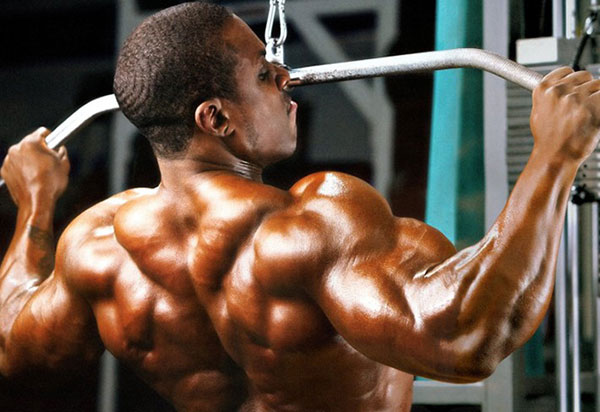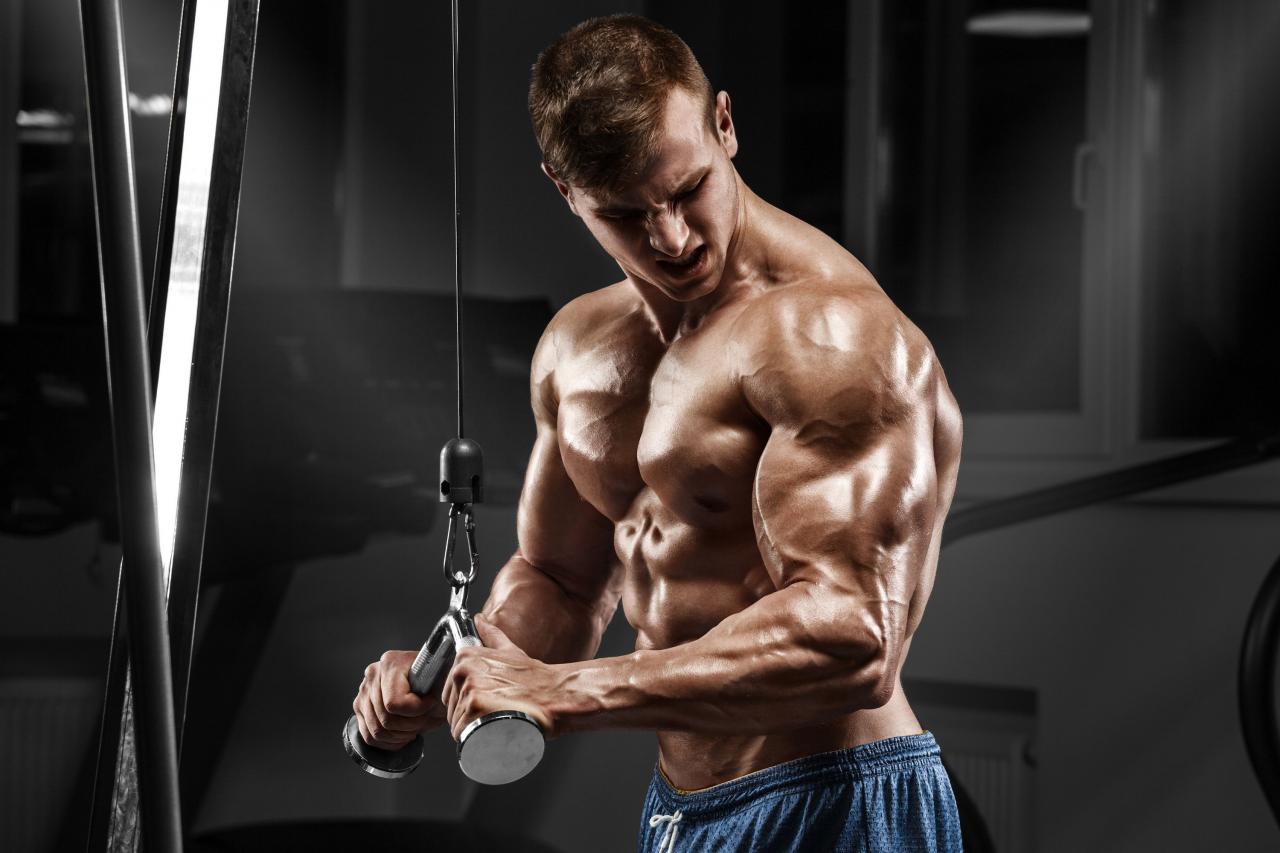
To build up the back muscles, especially the wings (lats), you need to do various pulls: to the chest, lower back, behind the head, pull-ups and other exercises. The row of the upper block is one of the main exercises for achieving this goal.
Why include the exercise in your workout
The row of the vertical block is the main exercise that simulates pull-ups. Therefore, it is important to do it to strengthen the muscles of the back. Naturally, working on a horizontal bar without weights, an athlete will achieve little. For muscle growth (hypertrophy), good progressive loads are needed.
Upper block pull allows the use of weights in excess of a person’s own body weight. In this case, there is no danger of falling down and falling – after all, you are sitting. Block pull is very important, and now you know why.
Exercise options
You’ve probably noticed that there is only one handle on the top block – long and slightly curved at the edges. In fact, there are other options, but the pull of the vertical block is done with just this.
To fully use the entire area of the broadest muscles, you need to pull the weight with various grips: by the head, to the bottom or top of the chest, to the neck. There are options for wide grip, narrow grip, forward and reverse and their combinations.
Every nuance can significantly change the exercise. Most often, one complements the other, which we will discuss later. For example, a wide grip vertical row can be supplemented with a narrow grip.
Technique
Narrow or wide grip row of the upper block, behind the head or to the chest sitting – variations of the same exercise. Each of them has its own characteristics that every athlete just needs to know. This knowledge will give a tangible advantage when designing training programs using a block simulator.
Narrow grip
This is a vertical reverse grip row. Set up a weight of 10-15 kg for warm-up in the block machine. Adjust the seat so that your feet fit snugly between the seat and the leg support bolsters. If the rollers are too low, you will not be able to sit properly. And if it is high, a lot of weights will lift you up during exercise in a block trainer. Deadlifts with the wrong technique are a bad idea. In this case, the position of the arms should be parallel.
- Stand, grip the handle with a narrow back grip. The distance between the arms is 10-15 cm.
- Sit with your arms straight with the weight up, feel the burden.
- With the strength of the lats, bring your elbows down. At the same time, the handle (bar) of the simulator is pulled to your chin.
- Lift your head slightly up so that your face does not interfere with the path of weight movement.
- Pull the handle down to your neck while sitting, after that trying to shorten the wings as much as possible: the weight should go down to the chest.
- You do not need to lean back, otherwise it will be another option for traction. We do everything while sitting, do not raise the pelvis from the seat.
- Hold the weight at the lowest point for 1-2 seconds, then return to the starting position. Practice a light weight technique. Warm up is 10-15 reps.
Set your working weight to do 3 sets of 10 reps. If the deadlift on the last repetitions is not given, or you need to perform them using jerks, reduce the weight by 5 kg (usually a step in a block trainer is just 5 kg).
This option of doing the exercise, along with the lats , actively uses the biceps, but the amplitude of movement is maximized.

Wide grip
Option 1: Reverse Grip and Row to the Chest
This is also a vertical reverse grip row. Put on a weight of 10-15 kg and adjust the seat of the machine as described above.
- Stand, grasp the handle with a moderately wide grip. Your arms should be slightly wider than your shoulders.
- Sit with your arms extended upward. Lean back a little so that the cable of the block trainer stretches under the weight of the weight you set. Your torso is a counterweight.
- Pull your weight down with your wings so that your elbows are 45 degrees downward.
- Bring the bar up to your top of your chest while maintaining your torso angle.
- Return the weight back. Do 10-15 warm-up reps.
Put on weights and do 3 sets of 12 reps. This pull of the upper block to the chest pumps the bottom of the wings.
Option 2: straight head grip
This is a vertical pull with a wide head grip:
- Grasp with your hands with a straight grip on the bend of the bar. This is considered a wide grip.
- Sit down. The body should be positioned strictly vertically, backward or forward deflection is inappropriate in this case.
- We tilt the head slightly down so that the back of the head does not interfere with the movement of the neck.
- With the force of the wings we pull the weight down behind the head, touching the neck.
- We hold the weight in the lower position for 1-2 seconds and return to the starting position.
- We do 10-15 warm-up sets.
Next, we set the weights and perform sitting 3 sets of 10 reps. This version of the exercise will be more difficult and traumatic than the others, so it is better for experienced athletes to use it. It is believed to make the best use of the teensis.
Option 3: straight wide grip to the chest
This is the pull of the vertical block to the chest or the vertical row of the wide grip to the chest:
- We grab the bar in exactly the same way as in the previous exercise.
- We tilt the body a little back, tilt the head back a little.
- With the force of the wings, while sitting, we pull the weight towards top or bottom of the chest. In this case, due to the deviation of the body, we achieve the desired angle for the correct muscle work. It is impossible to achieve this effect by pulling the horizontal block.
This pull of the upper block to the chest pumps the top of the lats. In addition, there are handles to do the deadlift with a parallel grip. This is permissible, but it is better to pull the horizontal block with a parallel grip.

Features and recommendations
Working with your back!
Upper Row – Exercise for the back muscles. It is not without reason that every time we focus on the phrase “by the power of the wings.” This means that you need to clearly feel what you are working on, what muscles are involved in the process.
The fact is that a significant part of the load from this traction can be taken due to the strength of the biceps, and the rest can be brought by the wings. In this case, the meaning of the exercise is lost. And it will be the biceps that will get tired. They are usually much stronger in humans than wings. Therefore, when the weight goes to the latissimus muscles, they immediately begin to feel discomfort, sometimes even hurt and “refuse”. The weight immediately becomes heavy.
When you are pulling a lot and it seems light to you, think, not biceps are you doing the exercise? There is a wide range of specific exercises for them, but here they just help, but do not prevail, as often happens with most novice athletes.
Elbow position
Raise your hands up in front of the mirror. Pay attention to your wings, turn your elbows in different directions – what do you see? The wings are moving. Therefore, the position of the elbows during any deadlift determines which part of the lats will work.
This is why there are different positions of the arms. It is necessary to keep the elbows in a strictly defined way in each grip. This will ensure that the desired areas of the spinal muscles are working. During the exercise, the elbows need to be fixed so that they do not “float” from side to side.
Also watch the shoulders. In any case, the movement of the hands will be parallel, but one shoulder may be higher than the other.
Jerks, cheating, injuries
If you are doing jerks, it means that you took a lot of weights. Turn it down and do everything smoothly.
Some people pull the bar down due to their own body weight , giving the movement an initial acceleration, and then return it back by the force of the muscles. This is dangerous, you risk damaging the ligaments.
The exercise involves the posterior bundles of the deltoid muscles. They are very vulnerable, for the sake of them we do a warm-up in order to properly warm up. If the latissimus muscle is not so easy to pull, then the shoulders are elementary. It is enough to make a sharp jerk on the “cold” muscle. The pull of the upper block with a reverse grip is easiest, and the shoulders are most often injured on it. Be careful and the vertical block pull will serve you great!
